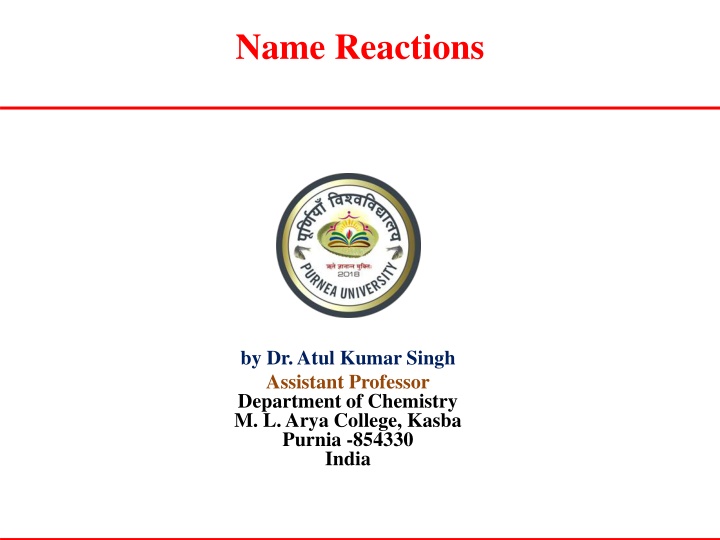Benzoin Condensation: A Name Reaction Explained by Dr. Atul Kumar Singh
Benzoin condensation is a classic organic reaction where aromatic aldehydes self-condense to form α-hydroxy ketones. Dr. Atul Kumar Singh, an Assistant Professor of Chemistry, details the mechanism and the specific catalytic properties of cyanide in this reaction. The reaction involves refluxing the aromatic aldehyde with a potassium cyanide alcoholic solution to yield the desired product, showcasing the importance of cyanide ion's nucleophilicity and acid-strengthening effects. The role of cyanide as a leaving group in the last step is also highlighted.
Download Presentation

Please find below an Image/Link to download the presentation.
The content on the website is provided AS IS for your information and personal use only. It may not be sold, licensed, or shared on other websites without obtaining consent from the author.If you encounter any issues during the download, it is possible that the publisher has removed the file from their server.
You are allowed to download the files provided on this website for personal or commercial use, subject to the condition that they are used lawfully. All files are the property of their respective owners.
The content on the website is provided AS IS for your information and personal use only. It may not be sold, licensed, or shared on other websites without obtaining consent from the author.
E N D
Presentation Transcript
Name Reactions by Dr. Atul Kumar Singh Assistant Professor Department of Chemistry M. L. Arya College, Kasba Purnia -854330 India
Benzoin condensation The benzoin condensation is self condensation of Aromatic aldehydes to form an -hydroxy ketone. The aromatic aldehyde is refluxed with alcoholic solution of potassium cyanide to form -hydroxy ketone.
Following properties make cyanide a specific catalyst for the Benzoin condensation. (i) Cyanide ion have Sufficient nucleophilicity to add to carbonyl group. (ii) A marked acid strengthening effect on hydrogen atom of the cyanohydrin. (iii) The ability of cyanide ion as a leaving group to depart from the cyanohydrin in the last step.























